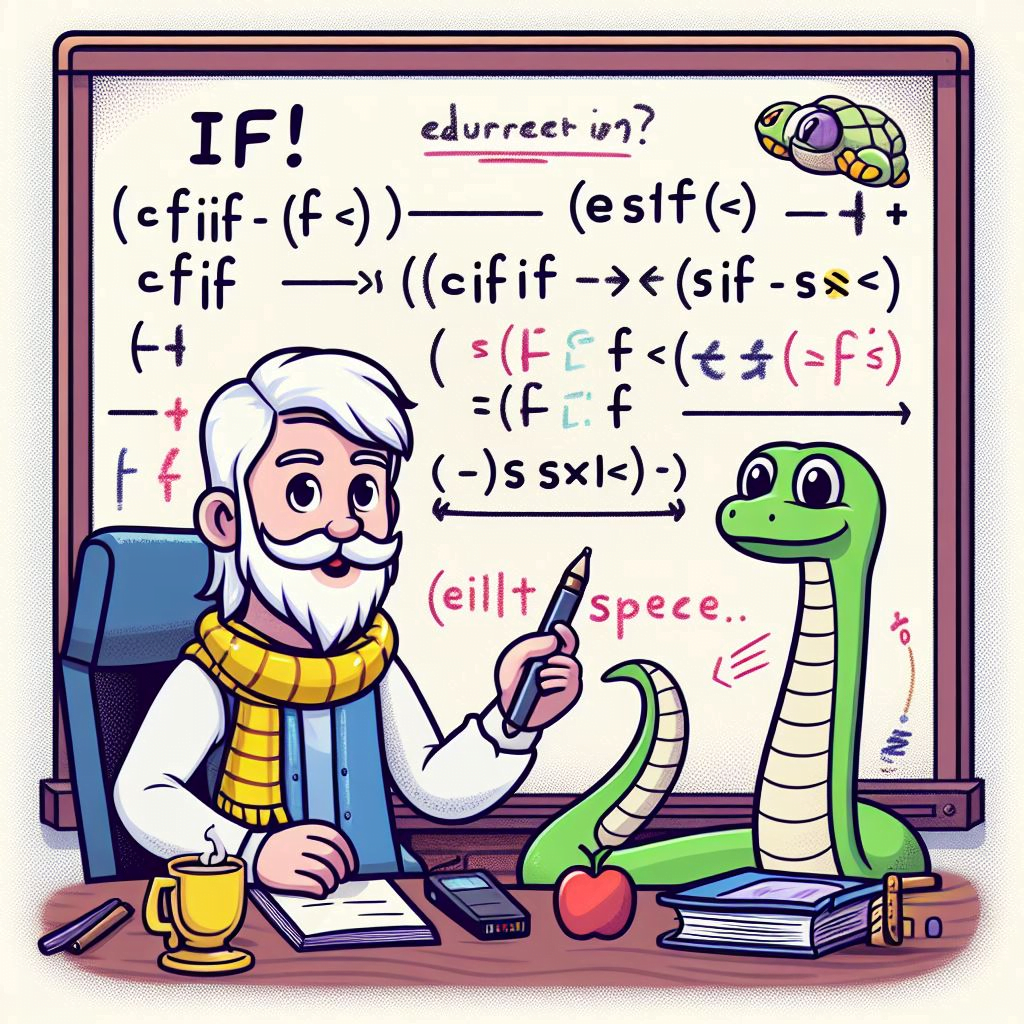Control flow is an essential concept in programming that determines the order in which statements are executed in a program. In Python, control flow is managed through conditional statements like if, elif, and else. These statements allow you to control the execution of your code based on certain conditions. In this blog post, we’ll delve deep into the world of control flow in Python, exploring these conditional statements with multiple examples.

Table of Contents
What is Control Flow?
The sequence in which a programme carries out its instructions is referred to as control flow. It allows a program to make decisions, execute specific blocks of code repeatedly, and control the flow of execution based on conditions. Python provides several control flow statements, including if, elif, else, and loops like for and while.
The ‘if‘ Statement
The if statement is used to execute a block of code only if a specific condition is True. It’s the most basic form of control flow in Python.
x = 10
if x > 5:
print("x is greater than 5")In this example, the code inside the if block will only execute if the condition x > 5 is True. Since x is 10, the message “x is greater than 5” will be printed to the console.
The ‘elif‘ Statement
The elif statement allows you to check multiple conditions after an initial if statement. It stands for “else if”.
x = 5
if x > 10:
print("x is greater than 10")
elif x == 5:
print("x is equal to 5")In this example, the code inside the elif block will execute if the condition x == 5 is True. If the initial if condition is not met, Python will check the elif condition.
The ‘else‘ Statement
The else statement is used to execute a block of code when the preceding if and elif conditions are False.
x = 3
if x > 5:
print("x is greater than 5")
elif x == 5:
print("x is equal to 5")
else:
print("x is less than 5")In this example, since x is 3, neither the ‘if’ nor the ‘elif’ conditions are met. Therefore, the code inside the else block will execute, printing “x is less than 5” to the console.
Multiple ‘elif‘ Statements
You can use multiple elif statements to check for multiple conditions.
x = 7
if x > 10:
print("x is greater than 10")
elif x == 7:
print("x is equal to 7")
elif x == 5:
print("x is equal to 5")
else:
print("x is less than 5")In this example, the code inside the elif x == 7 block will execute, as x is 7.
Nested ‘if’ Statements
You can also nest if, elif, and else statements within each other to create more complex conditional logic.
# Basic example: Checking if a number is positive, negative, or zero
# Assigning a value to x
x = 5
# Checking if x is positive
if x > 0:
print("The number is positive.")
# If x is not positive, check if it's negative
else:
if x < 0:
print("The number is negative.")
# If x is not negative or positive, it must be zero
else:
print("The number is zero.")
Conclusion
Certainly! Here’s an extended conclusion for your blog:
Control flow is a fundamental concept in Python programming that allows you to control the execution of your code based on specific conditions. The if, elif, and else statements are powerful tools for implementing conditional logic in your programs, enabling you to execute different code blocks depending on varying circumstances.
Additionally, loops such as for and while provide mechanisms for repetitive execution, allowing you to iterate over sequences or perform tasks until certain conditions are met. By mastering these control flow statements, you’ll not only gain the ability to write more dynamic and flexible Python code but also enhance your problem-solving skills as you learn to design algorithms that respond intelligently to different scenarios.
Understanding control flow is crucial for building robust applications that can adapt to changing requirements and user inputs, making it an indispensable skill for any Python programmer. With practice and experimentation, you’ll become adept at leveraging control flow to create efficient, readable, and maintainable code that meets the demands of diverse real-world applications.


